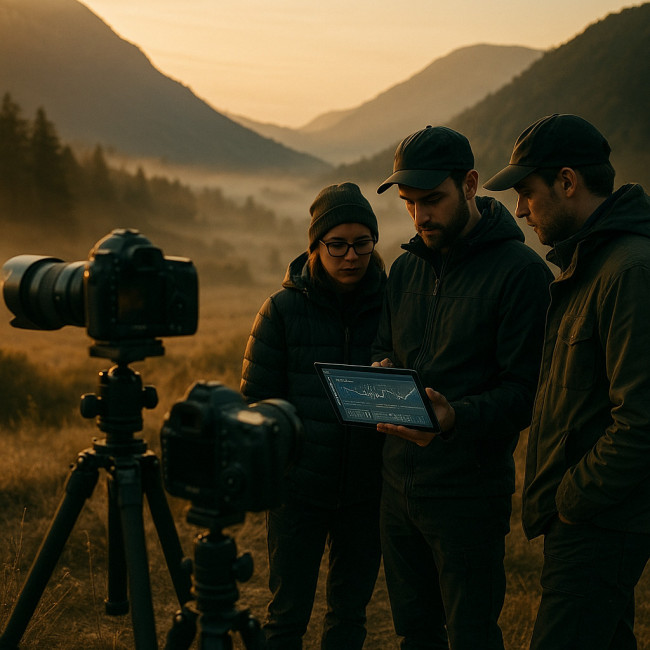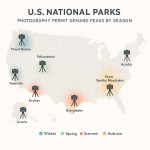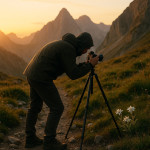Weather-intelligent scheduling keeps landscape shoots on time and within budget
A single rain shower can wipe out an entire day of landscape photography, inflate travel costs, and derail client trust. By weaving real-time meteorological data into your production timeline, you safeguard budgets, protect gear, and ensure you capture the light your brief demands. This guide walks you through proven, weather-intelligent scheduling techniques that professional crews rely on to deliver striking outdoor visuals—without costly overruns.
Why weather budgets spiral without data-driven scheduling
Landscape shoots are uniquely vulnerable to shifting sky conditions. When planning relies on long-range forecasts—or worse, guesswork—you risk:
- Extra travel days while waiting for clouds to clear.
- Rush gear rentals to replace water-damaged equipment.
- Crew overtime triggered by unpredictable weather holds.
- Location permit extensions that double administrative fees.
Industry reports show that weather delays add 12–18 % to average location budgets. A weather-intelligent plan reduces that exposure to under 5 % by pairing hyperlocal data with flexible call sheets.
Core components of a weather-smart scheduling system
1. Hyperlocal forecasting at hourly resolution
Global forecasts paint with a broad brush. Switch to providers that deliver 1 km grid data and hour-by-hour updates. APIs such as Meteomatics or Dark Sky (now part of Apple Weather) feed precise data directly into planning spreadsheets or project-management apps.
2. Sun-path and golden-hour mapping
Golden and blue hours shift daily. Tools like PhotoPills and Sun Surveyor plot the sun's azimuth and altitude for any coordinate. Combine this with the sun-path scheduling techniques already popular in architectural shoots to lock in shadow direction and colour temperature.
3. Seasonal pattern analysis
Review the last decade of climate data for your target region. Chronic fog in coastal valleys or monsoon transitions in mountain passes can make “shoulder season bargains” more expensive in reshoot fees.
4. Contingency window buffers
Block 10–15 % of total production time as floating days. Because they are reserved in advance, you avoid last-minute accommodation surcharges and crew overtime negotiations.
5. Real-time alerts for threshold breaches
Set automated triggers: wind gusts > 35 km/h, humidity > 90 %, or UV index < 2 for dusk shots. Crew receive push notifications and can reposition, protect, or power down gear in minutes.
Step-by-step workflow: Build a weather-intelligent call sheet
- Define creative constraints. List must-have lighting moods, fog tolerance, and camera angles (elevated drone or ground-level). Reference drone-versus-ground angle guidelines.
- Pull historical climate normals. Download 10-year averages for temperature, wind, and precipitation.
- Select a three-day primary window with the highest probability of meeting light and weather criteria.
- Reserve two backup windows within a week of the primary date to benefit from existing travel bookings.
- Embed API-driven weather widgets in the call sheet so every crew member sees hour-by-hour updates.
- Schedule location moves around micro-climate timing—for example, shoot valley floors at sunrise to dodge mid-morning convection clouds.
- Reconfirm 48 hours out. If forecasts dip below pre-set thresholds, pivot to the first backup day without incurring same-day cancellation penalties.
Recommended tools and data sources
| Tool | Use case | Free tier? | Notable feature |
|---|---|---|---|
| YR.no Hourly Forecast | Quick cloud & rain checks | Yes | 1 km grid for Europe |
| Windy Pro | Wind & pressure maps | Limited | Customisable alert zones |
| Meteomatics API | Data feed to spreadsheets | No | 10-minute refresh cycles |
| Sun Surveyor | Sun & moon path plotting | No | AR overlay on location scout |
| Slack + Zapier | Push alerts to crew | Yes | Threshold-based triggers |
Cost savings you can realistically expect
Teams that adopt weather-intelligent scheduling report:
- Up to 30 % reduction in travel extensions.
- 20 % fewer drone flight cancellations due to high wind alerts.
- 15 % drop in overtime thanks to accurate dawn start times.
Pair these savings with lessons from remote-project budgeting guides to keep overall spend predictable.
Common pitfalls—and how to avoid them
- Overreliance on smartphone apps. Many free apps cap forecast resolution at 5 km. Always cross-check against a professional API.
- Ignoring micro-climates. Mountain ridges, coastlines, and urban heat islands create hyper-local patterns.
- No gear-protection plan. Weather insights are useless if lenses fog over. Add silica gels, rain covers, and lens hoods to your kit checklist.
- Permit inflexibility. Build contingency ranges into permit start and end times during application to avoid costly amendments.
Integrate weather data with crew and gear logistics
Weather intelligence shines when merged with your broader production plan:
- Transport. Sync sunrise times with shuttle pickups so crew arrive 30 minutes before civil dawn.
- Power management. Temperature alerts prompt battery-warming protocols.
- Insurance. High-wind triggers automatically notify brokers of elevated drone-risk periods.
Case study: Fog-prone valley, big-brand brief
A lifestyle brand commissioned sunrise shots in a valley notorious for dense morning fog. The producer:
- Analyzed five years of dew-point data to find a two-week window when fog lifted by 06:45.
- Planned crew call at 07:00 and secured a backup ridge location 200 m higher.
- Triggered an automated alert when humidity exceeded 88 % at 05:00, prompting an instant switch to the ridge.
The result: mission-critical hero images captured on day one, eliminating the need for an extra hotel night and preserving the drone budget for creative alt angles.
Quiz: Are you ready to plan weather-smart shoots?
FAQ
- Do I still need traditional location scouts when I use hyperlocal forecasts?
- Yes. Scouts confirm access, terrain safety, and visual composition—factors weather data cannot evaluate.
- How far in advance should I lock in contingency days?
- Reserve them when you secure your main shoot dates. Hotels and crews often offer reduced rates for “soft hold” days booked early.
- Can I merge weather data with budgeting software?
- Absolutely. Many production platforms accept CSV or API imports, letting you adjust cost lines automatically when shoot days shift.
Wrap-up: Lock in light, protect your budget

Weather-intelligent scheduling turns atmospheric uncertainty into a manageable variable. By integrating hyperlocal forecasts, sun-path analytics, and automated alert systems, you shorten production days, avoid overruns, and deliver visuals that match creative intent. Ready to put this into practice? Browse a roster of vetted landscape photographers experienced in weather-smart production and secure your next project with confidence.
Next step: Compare seasonal location demand and locking strategies in our deep dive on seasonal shoot planning to maximise availability and minimise costs.











